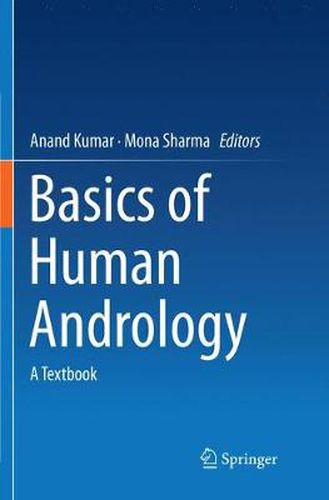Readings Newsletter
Become a Readings Member to make your shopping experience even easier.
Sign in or sign up for free!
You’re not far away from qualifying for FREE standard shipping within Australia
You’ve qualified for FREE standard shipping within Australia
The cart is loading…






This book addresses various aspects of male reproduction ranging from mind to testis. The basis of maleness lies in the Y chromosome. Reproductive functions depend upon the development of male organs from embryo to manhood. Testis, the male gonad, produces hormones and sperms; the latter is ejaculated in semen secreted by accessory sex glands. The testicular events are under neuroendocrine regulation which coordinates reproductive life from puberty to andropause. Biology is as important as psychology in the control of reproduction. Behaviours are rooted in the brain. Various brain areas and neural circuits regulate male behaviours. Brain sexual polymorphism is the basis of homosexuality and transgenders. Neurophysiology has always been complex to understand. But, this book presents it in a simpler way. Reproductive organs receive systemic influences, too. The book describes roles of metabolic, immune and thyroid status in reproduction. The book has chapters on male reproductive pathophysiology. Principles of diagnosis and management are also included. The last section deals with contraception and yoga. The traditional wisdom of yoga has been used for millennia to enhance sexual and reproductive experience. This book will serve basic medical scientists, urologists, nephrologists, surgeons, andrologists, endocrinologists, gynaecologists, nurses, councellors and also the students of biological sciences who want to study reproduction in human male. The language is kept simple so that an inquisitive person with a background of biology too may read it.
$9.00 standard shipping within Australia
FREE standard shipping within Australia for orders over $100.00
Express & International shipping calculated at checkout
This book addresses various aspects of male reproduction ranging from mind to testis. The basis of maleness lies in the Y chromosome. Reproductive functions depend upon the development of male organs from embryo to manhood. Testis, the male gonad, produces hormones and sperms; the latter is ejaculated in semen secreted by accessory sex glands. The testicular events are under neuroendocrine regulation which coordinates reproductive life from puberty to andropause. Biology is as important as psychology in the control of reproduction. Behaviours are rooted in the brain. Various brain areas and neural circuits regulate male behaviours. Brain sexual polymorphism is the basis of homosexuality and transgenders. Neurophysiology has always been complex to understand. But, this book presents it in a simpler way. Reproductive organs receive systemic influences, too. The book describes roles of metabolic, immune and thyroid status in reproduction. The book has chapters on male reproductive pathophysiology. Principles of diagnosis and management are also included. The last section deals with contraception and yoga. The traditional wisdom of yoga has been used for millennia to enhance sexual and reproductive experience. This book will serve basic medical scientists, urologists, nephrologists, surgeons, andrologists, endocrinologists, gynaecologists, nurses, councellors and also the students of biological sciences who want to study reproduction in human male. The language is kept simple so that an inquisitive person with a background of biology too may read it.